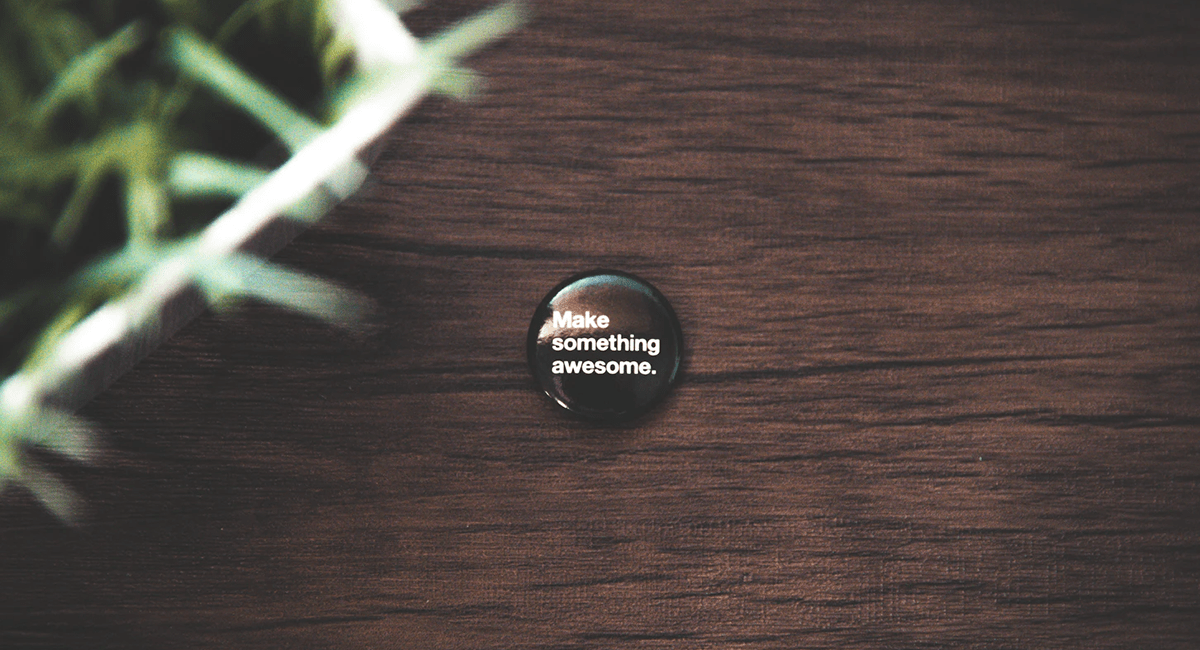From the Creator: Shift Happens
Can, “just because,” be an acceptable explanation?
Have you ever gotten swept away in something? Like, truly and uncontrollably swept away? The kind of swept away where you can recall seeing [whatever the metaphoric shoreline was] coasting farther and farther away into the horizon; only to lose sight of it completely? I feel like love and passion are the only two things that do this to us: They come into our lives, unannounced / unexpected / (sometimes unwelcomed!), and the next thing you know we’re a victim to their ebb and flow.
And, when they meet? A perfect storm.
That was the case, for me, two years ago when I walked out of my in-house role and took my nearly decade long freelance career and turned it into a new age creative agency. I used the connections I had built over the past eight years or so and built a remote team of creative professionals; working together towards a common goal. (To keep thriving.) Collectively, we took aim at building and perpetuating the success of brands within the entertainment, fashion, and luxury lifestyle industries. It’s that “new age” approach that I accredit to our tremendous success; it has served us all very well.
Long story short: Most of the tasks that fell on my plate in the early days were hyper-focused on public relations, and I was happy to make those my priority, in the beginning. True, I had eventually been swept away in “the pink cloud” of a new endeavor and — with very little time to plan and strtaegize for myself, in the traditional sense — I developed a level of comfort (about a year in) in the fact that the tide may never change and PR may very well come to be my sole focus.
A lapse in judgement I’d say.
The truth is, Public Relations makes up only about an eighth of what my team and I actually do. And, it’s only been a billable service of mine for the last five years or so. My portfolio of services range from brand development to strategic communications, social media content and advertising management, and yes, traditional PR - media placement, event planning, and community engagement, among a bunch of other “stuff” in-between.
My point is: Over time I have come to realize it makes very little sense to have “Public Relations” hold such valuable real estate in the business title; it’s confusing and slightly detouring. That said, as of this past weekend, the formal title of the organization is now Eric Michael Creative Studio. Yet, my mission, focus, commitment to service, and my core values all remain the same.
After all, a rose by any other name still smells as sweet.
I look forward to serving under this new identifier in an even more transparent way; with the same signature “freelance approach” we’ve all come to appreciate, so much. Please note though that this new identity has impacted the website, mail servers, and social media channels. Professional activity is now streamlined through EricMichaelCreative.com and the appropriate email address for professional correspondence is eric {at} ericmichaelcreative.com {dot} com or @EricMichaelCS across social. (Data, email, calendars, etc. have all been transferred; there is no need to re-copy me on past notes/invites.)
Thanks for your patience and understanding as both my practice and I continue to evolve.
Why Us? 5 {Great} Reasons to Consider Outside Help from a Creative Agency
The Marketing Industry, with special emphasis on the digital marketing sect — which only continues to develop momentum, is an ever-changing field; playing an increasingly intricate role in the success and longevity of a brand. And, in today’s market, there are two things that weigh heavily on a brand's marketing efforts over time: In the best case scenario, (1) the business grows too fast that that the administrative team simply cannot keep up with the day-to-day efforts. Or, (2) the business falls so far behind the curve that there is no understanding what the process and procedure for attracting today’s audience should be.
No matter what way you slice it, businesses today need help; lots of it.
There are a variety of ways in which an organization can deal with either of the above scenarios. You can hire in-house talent, either full- or part-time, or you can opt for outside assistance by way of freelancer or agency. It’s the business owner’s choice to decide which is best. Though, navigating that decision can be time consuming and, without proper leadership, the end result could do more harm than good.
Here are five reasons you might want to look into help from an agency to grow your marketing efforts…
Outsourcing undeniably saves you money in the long-run: Typical monthly marketing and communication spends (for agency work) start at $3K to $5K per-month, depending on the scope of work. Those numbers over the twelve month calendar year come to a "total spend" of $36K to $60K, annually. Now, let's compare them to the cost of in-house talent: Marketing Manager roles, in the United States, average $73K in annual salary earnings (before benefits) according to Glassdoor, and they usually don't come with the design skills. Graphic Designers and Web Developers, in the United States, command an average salary of $53K per-year (again, before benefits). So, the question becomes $120K+ for two people, or $60K for a whole team?
Agency partnerships require a little more structure: If you feel your organization is lacking necessary structural elements (process, business development documents, etc.), an agency can get that ball rolling - because their success is reliant on it. Meeting transcripts with listed deliverables, annual/semi-annual marketing and communications strategy, social media content schedules, and the like are all just some of the documents that’ll establish your new bank of information, tracking business growth.
Outside help equates to an outside perspective: Marketing operations are incredibly reliant on a creative approach to thinking. The phrase, “we’ve always done it that way,” is a Yellow Brick Road to stagnation and gradual decay; whether evolving social media strategy or just generating new web / blog content, it can prove best to not have someone so ingrained in the day-to-day.
Larger teams mean more experience; for better strategy, content, and implementation: The age-old saying, “two heads are better than one,” echos a little louder when considering whether or not to welcome in outside help; especially from an agency. Where the average Marketing Manager has 3-to-5 years of experience, the agency team spearheading your efforts likely has (collectively) anywhere from 20 (on the smaller end) to upwards of 50 years experience. (Ours? I typically serve the average client with two or three additional associates, for an collective average of 25-35 years of experience.)
Distance makes the heart grow fonder: Take it with a grain of salt when we say third-party help tends to have a better mood than the average in-house employee. That’s because they’re not so ingrained in the day-to-day operations of the business. (Again, grain of salt.) Agency team members serve as more of a “partner” role than a traditional employee; valuing and respecting that one-on-one time with their client even more deeply. And you, theirs.
Now, for three {of the many} reasons why you should hire me to carry your message...
This is not your typical freelance relationship, I’m running a new-age agency. Fueled by a decade-long history in freelancing for small- to large-size organizations, my processes and implementation tactics are scalable and “made-to-order” for a unique and unprecedented approach. “My Team” is made up of 5-to-10 creative professionals across the United States and activated “as needed” on a case-by-case basis; this not only gives us a bi-coastal footprint but also, and probably most importantly, reduces client overhead.
I’m your lead point of contact on all operations, always. You’re never pawned off on an intern or other associate. Ever. I handle all inquiries, issue all proposals, accept all responsibilities — and the consequences that come along with them. (And, P.S.: I haven’t taken a formal vacation in over 10 years!) It’s me and you, in this together.
The “no bullsh*t” law that governs all of my relationships. From my clients to strategic partners, the team behind me, and all those that collaborate with us — I don’t bullshit. There’s value in the lost art of honesty; radical candor and total transparency are what enrich my relationships, and ultimately amplify the end results. I have no room for ego.
THE TIME I SPEND consulting with clients is the most rewarding and deeply personal commitment I could ever make to someone. There is nothing I love more than establishing that partnership, building and perpetuating the success of these brands and businesses.
Need more info? Check out our services menu here.
3 Ways to Revolutionize Your Pinterest Strategy
There’s a classic situation happening in the marketing industry, and your awareness to it could (maybe) shape the future of your company. While more and more attention and financial resources are being dedicated to the popular Facebook, Instagram, and Twitter platforms — people are overlooking the redheaded stepchild, Pinterest. Yeah, remember her? She’s still thriving.
The site many of us take for granted — keeping it installed in our phones only to score inspo for haircuts and kitchen recipes, is actually used by more than 70 million users each month. The network is known to more than double exposure and website traffic in as soon as a month; making it one of the easier proven methods in digital advertising. And, the strategy is just as easy to implement as it is to use — literally.
Here are three (super) simple things you can do to increase your exposure and maximise results in the Pinterest community:
Master your profile. Think of it as the first impression, because it is. Craft your account to cater to your target market or Hubspot persona. (Not familiar? More here.) Think: Less about you, more about them. You're curating content to appeal to an end user, not necessarily yourself.
Keep your bio content brief and give the new user (stumbling across your profile) a reason to follow you; on-brand, friendly photos are always helpful. Oh, and make sure you've got buzzwords — related to your content — in your profile name.
Implement Pinterest SEO into your website's framework. Contrary to popular belief, Pinterest is a different kind of beast and lumping it in with other social media networks isn't just unfair — it's not right. Instead, Pinterest is technically considered a search engine site, like Google, and therefore acts differently. Yoast SEO is our product of choice for clients of The Studio, and I think you’ll find equal success as you move forward in your strategy. (They take the guess work out!)
Furthermore, you should be marking up your individual pins appropriately. This starts with creating and organizing your boards to cater to your target market, not yourself. Next, make sure you're adding keywords to your board and pin descriptions. This is what the search engine calls on to show your content in its results. Pins should be light in text and strategic in description.
Make Pinning a conscious effort. Once content hits your personal website - or a level of consciousness within you, via third-party content - add it quickly to your feed. These posts shouldn't just be pinned once. No, there should be Boards for your domestic content (via your personal channels) and the Boards for third-party channels by content or subject matter. Remember, people can choose to follow individual boards — and will. We don't want them to miss anything!
Google Chrome has an awesome extension that helps streamline the process; you can download it here. And, BoardBooster and TailWind are also great automation tools. (Look into them!) BoardBooster, allows you to pin your scheduled content to a "secret" board and then BoardBooster automatically publishes it to your Pinterest account based on a timeframe you create.
Other fun facts that you probably didn’t know about the network?
The entire network is made up of more than 175 million active users (70 million are domestic, USA) with more than 75 billion pins made. 85% of the users are female and of that 42% are considered 'adult' or over the age of eighteen. 67% of the networks database is considered to be millennial, and they account for more than 1.5 billion searches each month. Oh, and 55% of online shoppers in the US choose Pinterest as their favorite social media platform. Boom!
5 Truths (and Biggest Mistakes) in Influencer Marketing
Influencer marketing has fast become one of the most effective strategies for marketing professionals to expand the reach of their thriving brands. Statistics - from a recent article in AdWeek, stake the claim that more than 90% of marketers who rely on the strategy would confirm it to be effective.
Further studies have shown that audiences prefer influencer-hosted features over traditional advertising and otherwise "mainstream" celebrity endorsements. The practice, at its core, relies on the age old fact that people act more decisively from word-of-mouth recommendations; influencers are just locally, nationally, and globally dominating “trusted sources.” Diving even further into the research, this study, says audiences of YouTube find their popular personalities to be 17 times more engaging than other celebrity figures.
With all of that research in mind, it’s no wonder that marketers are turning their focus to the new-age approach. Unfortunately, yet commonly seen throughout the marketing industry, the gold rush to master the craft has left some people fighting an even harder battle towards implementation. The fun thing about mistakes though? If you know better, you do better. (Classic situation.)
Thankfully, I’m here with the Top 5 mistakes most commonly made in the implementation process — and yes, how to avoid them:
Failing to understand the audience.
Like everything else in the marketing industry, if you don't truly know your audience you're just setting yourself up for failure. The long-term influencer-lead marketing strategy starts with the traditional marketing persona. Know who your customer is; only then can you truly engage. If you’re not familiar, Hubspot has excellent tutorials and information on how to build and implement personas into your efforts.
Understand and select the appropriate channels.
It's important that your channel selection talk to the appropriate audience; bearing in mind that B2B and B2C audiences direct their attention to different channels, for sure. For example, and most obviously, a campaign aimed at the Generation Z consumer would be far less effective via Facebook and Twitter; rather — lean on Instagram. That's because Gen Z prefers the Instagram platform over all others, overwhelmingly. Looking to target Gen X? Facebook and LinkedIn are your vessels. This knowledge truly is power, allowing you to home your focus more pointedly - as opposed to micro-managing a handful of platforms via trial-and-error.
Dropping the ball on the call-to-action.
The question is: What should the audience do to engage with the influencer campaign? Is it as easy as liking the photo? Should they drop a comment? Share? Follow the profile? All of the above? If the goal is to forward traffic to your website, make sure there's a dedicated page already in place to service the prospect. Google says that more than 40% of shoppers will automatically choose a competitor if the originally marketed brand doesn't offer a fully-optimized website. That same study found that 57% of shoppers will not recommend a company that doesn't offer a mobile-friendly site. Yikes!
Misunderstanding or misleading the influencer campaigns.
It's crucial that whomever is at the helm of your influencer campaigns have a clear understanding. Consulting with a mastercraftsman in the field can save you hours of time and thousands (and thousands!) of dollars in the trial-and-error process. One great way to get the education you need is to attend an event that focuses on influencer marketing for a crash course understanding.
On the flip side, as influencer marketing becomes so prevalent — before it eventually burns out and we're onto the next thing — marketing agencies are scrambling to offer the service to clients. Sadly, many large scale agencies don't have the real world experience in implementing these campaigns. Or, they've ignored the practice for so long that they're entirely out of the game. This ignorance proves to only underserved the client as contemporary campaign efforts need to have an integrated approach, on one level or another. If you're in the market for an agency's assistance, make sure you select one that has the experience working with influencer marketing strategy or is lead by an influencer itself. (Hello!)
Finally, don’t expect results overnight.
Sure, some cases — the best of them — can yield measurable results from a singular collaboration. Though, this is usually not the case and especially if your brand is not in the ecommerce arena. Influencer marketing can really take time because one of the root objectives is to amplify brand awareness; even after that awareness is achieved, the prospective client still needs to trickle down the marketing funnel to consideration and decision making stages before making that purchase.
3 Boundaries Worth Setting in a Freelance Practice
Last week, one of my Instagram followers (from the pool of three) wrote me a note asking me for advice as she transitions from her in-house role to that of a freelancer, in search of balance. She wrote: “I just have my two weeks [notice] to my day job and I’m looking forward to chasing my dreams of freelancing. I am not sure where that will take me but I do know that I need to strategize as much as possible before hitting the streets. I’d love your feedback. What’re your thoughts on boundaries? How do you set them?”
My thoughts on boundaries? They’re muy importanté — and worth every butterfly notion at start-up with a client. I use the words “butterfly notion” because it’s exactly how it feels. Signing a new client is a such an exciting process and you’re bound to be overcome with excitement that you’ve got a check new focus and ideas to play with. It’s my favorite feeling, ever. But, you cannot allow those puffy pink clouds of excitement to skew your judgement.
Boundaries are daunting to say the very least. As humans, we inherently love to push them; defy them; and test them even when they’re broken. I am as guilty as anyone else. But, by failing to set expectation and implement “the B word” into your working relationships you’re really only setting yourself up for failure.
Here are my three top boundaries for the blossoming freelance pro — and how/why you should implement them:
Get as specific and pointed as possible when it comes to time management. Time is very sacred and yours is very (very!) precious. Remember, every minute you spend doing something is another minute you could be billing a client. (And, let that lead you. Along with gratitude.) Anyway - things like hours of operation and commitments to clients should be clearly documented and honored accordingly.
Client commitments - aka labor hours, design time, tasks, and deliverables - should be clearly outlined in your official contract agreement. (Every client should sign a contract!) These commitments and deadlines need to be met on your end and billed for immediately, regardless of whether the client's deliverables have been received. This might look like aggression, to the both of you, but it’s the good kind of aggressive behavior — that keeps everyone in check. Trust me.
Outline your Terms & Conditions in a separate document or - even better - a web page, like this, and make sure every client receives a copy in their welcome kit. Digital copies can be bookmarked and consulted later (hah!). But, just because you say it, doesn’t mean they’ll listen; you’re going to need to stand firm on things — like rogue appointment times and 9PM texts and phone calls on a Saturday, “just to chat.” Shut it down.
Require a singular channel for communication. There are so many great tools out there, now more than ever, to help organizations streamline their communication. Choose one, or simply rely on email, and preface the importance of keeping the communication segmented. If things get lost or misplaced in the digisphere… it’s your head that will role. Plus, if everything is in one channel, you can easily turn on and off the notifications and your overall availability.
In the early stages, you’re going to have a lot of “do I really need all of this?” thoughts. But, listen to me, invest in the necessary softwares and make them an intricate part of daily life. Transitioning from the old school email-only approach to a more intuitive platform like Slack or the support threads in Freshbooks can be very difficult. Or impossible altogether.
Organizing your billing terms and outline them, clearly and honestly. Our achilles heel, as freelance creative professionals, is our passion. It’s the reason we’re hired and often times the reason why we’re not. Never, ever give anything away for free. (Oh, and a cup of coffee — or lunch on a park bench is not an appropriate form of payment to “pick your brain.”) Your thoughts, time, and efforts are all valuable — so valuable, in fact, that they’ve got a price tag. Each of them.
Consultation fees are a must — but it’s up to you on how you handle them. The research and proposal development process takes a tremendous amount of time and at the end of the day there’s nothing stopping the potential client from stealing the idea(s) and walking away. My rule of thumb is to enforce them for everyone, established clients or new relationships alike (remember, a new idea / product / business is a new “project”). Then, you can waive them if they choose you to execute on the project.
Protocol for The Studio is a $150-300 consultation fee, which only fluctuates based on our availability and the turnaround time in which the deliverables are needed, and that fee is waived / “applied to the account” if we are hired for the gig.
Labor hours need to be tracked and billed immediately - as used. If you’re anything like me and have an issue talking about money, you’re going to need to get over that right-the-f*ck-now. Time commitments to clients can go rogue at the drop of a hat, and trust me, they want you to get swept away in the tide of passion. It’s how you lose focus and ultimately forget to bill - and if you wait long enough or don’t speak up on past due invoices, a dispute and delay in production is imminent.
Remember, as you leave your role in [presumably] corporate America, the boundaries are no longer set for you and there's really no freelancer handbook to govern your relationships. Your work hours, paydays, emails, and availability are all your responsibility. And, so are the consequences that come with mishandling any of them. It’s hard to lose focus of the importance of boundaries, especially as you establish this new name for yourself, but in the long run - they’re worth it.






